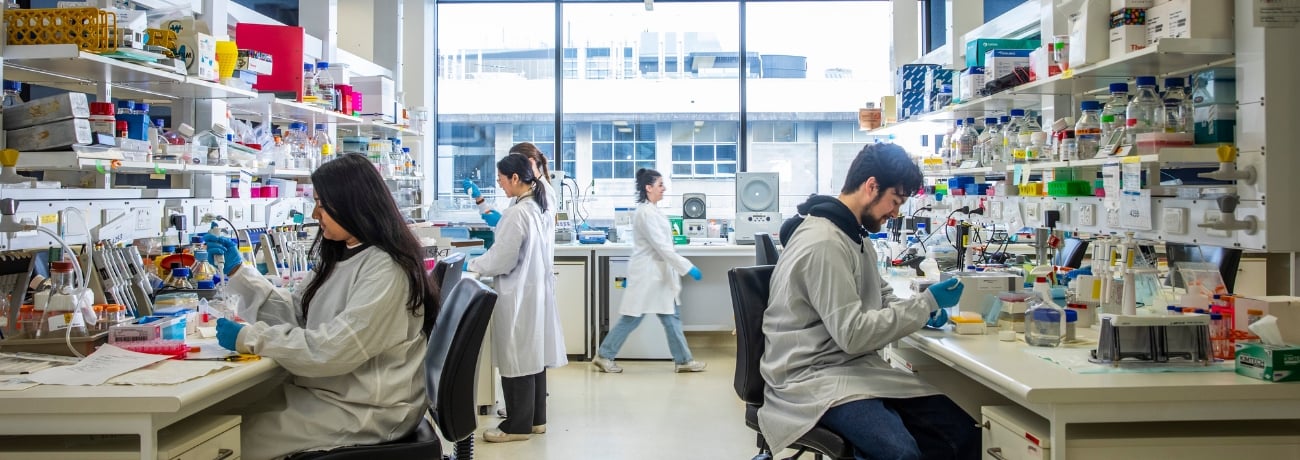Key highlights
- Dravet syndrome is a catastrophic infant epilepsy that results in delayed mental and behavioural development, with higher risk of early death
- Dravet syndrome is caused when one of two copies of the SCN1A gene mutates and produces a protein that doesn’t work, leaving the patient with half the normal amount of functional protein
- Scientists surmised that one way to treat this disorder might be to find a drug that makes the reduced amount of healthy protein work harder
- The Florey’s Professor Steven Petrou, working with Queensland collaborator Professor Glenn King, realised that that the venom of the West African tarantula (Heteroscodra maculata) could provide the vital breakthrough
- The tarantula venom contained a small peptide, called Hm1a, which the researchers showed hyper-stimulates the protein that is affected in Dravet patients
- In a mouse model of Dravet syndrome, the spider peptide recovered activity of neurons to normal levels, which stopped seizures and prevented early mortality
- The tarantula peptide is now a candidate for precision therapy in Dravet patients
A catastrophic epilepsy
Dravet syndrome is a catastrophic epilepsy affecting young children before their first birthday. Children live with a range of very serious symptoms including intellectual disabilities and multiple daily seizures. The disease can result in early death.
Now, using a key ingredient isolated from venomous tarantula venom, scientists from the Florey Institute of Neuroscience and Mental Health, and the Institute for Molecular Bioscience at the University of Queensland, have discovered an effective treatment for Dravet syndrome.
Dravet syndrome is caused by a mutation in a gene that produces a protein that is critical for calming electrical activity in the brain.
Patients with Dravet syndrome only have half the normal amount of this protein, meaning the brain is overactive, which results in seizures and the other features of Dravet syndrome.
“We reasoned that if we could just make the remaining protein work harder, it would effectively pick up the slack – much like a cyclist on a tandem bicycle can help her exhausted passenger by pedalling harder to maintain speed,” says Professor Steven Petrou, researcher and Director of the Florey Institute of Neuroscience and Mental Health.
Before treatment, young Dravet mice displayed reduced activity in a specific type of brain cell whose job it is to reduce overall brain activity.
Spider venom activates brain cells
“After applying the compound from the spider venom to nerve cells from the brains of Dravet mice we saw their activity immediately return to normal. Infusion into the brains of the Dravet mice not only restored normal brain function within minutes but over three days, we noted a dramatic reduction in seizures in the mice and increased survival. Every single untreated mouse died.”
The team’s results show that it may be possible to treat this previously intractable epilepsy by directly targeting the faulty gene.
The scientists are hopeful that the remaining technical challenges can be overcome, offering new hope to Dravet families.
The results were published in the Proceedings of the National Academy of Sciences of the United States of America.
Funding for the research came from the National Health and Medical Research Council, Australian Research Council, Dowd Foundation, Citizen’s United for Research in Epilepsy Pediatrics, and the European Union and the European Regional Development Fund. The Florey gratefully acknowledges operational infrastructure funding from the Victorian government.
